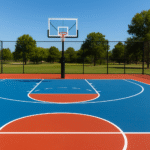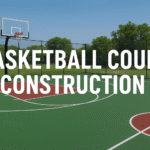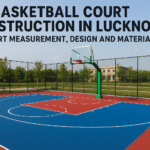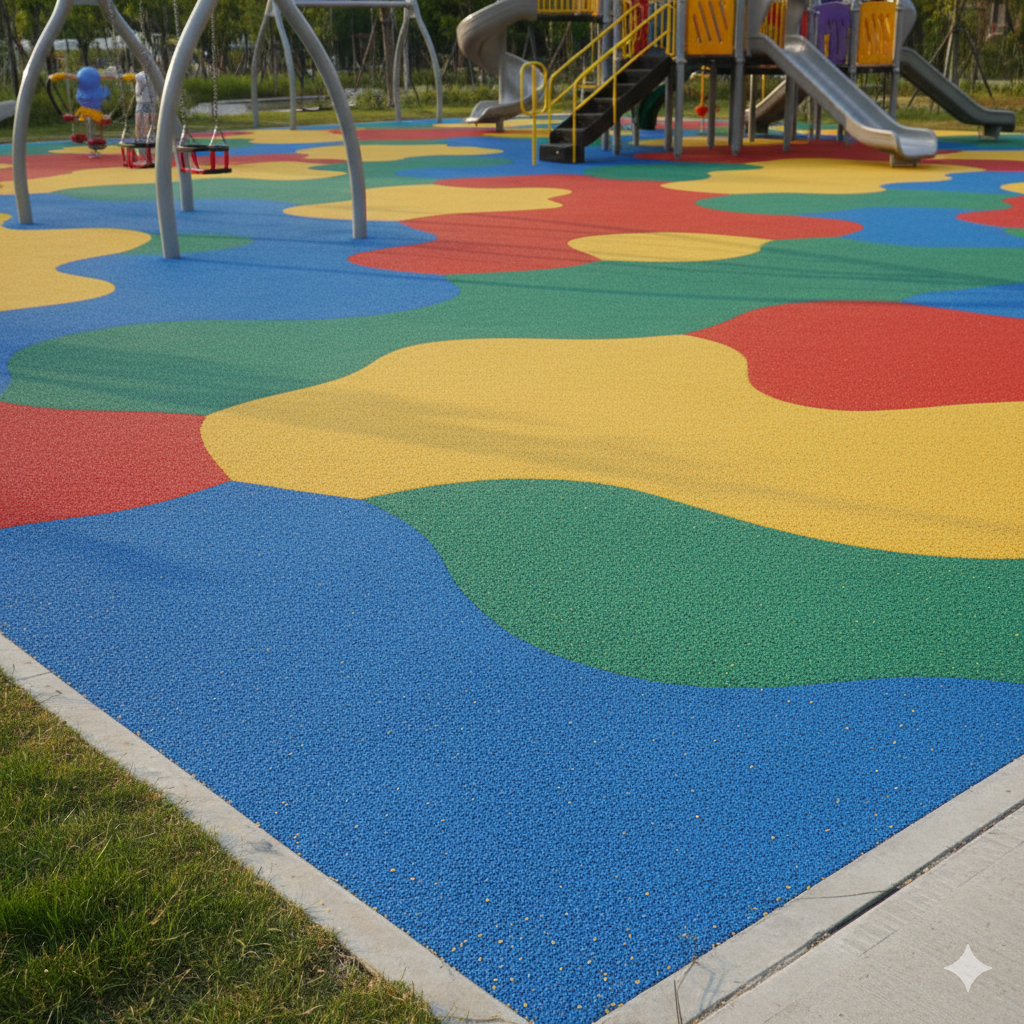Introduction
EPDM flooring is rapidly becoming a go-to solution for both commercial and residential spaces. But what exactly is EPDM flooring? Simply put, EPDM (Ethylene Propylene Diene Monomer) is a type of synthetic rubber that’s tough, flexible, and weather-resistant. From playgrounds to gyms, it’s favored for its durability and safety features. Think of it as the all-weather, all-purpose superhero of flooring materials.
History of EPDM Flooring
Origin of EPDM Material
EPDM was first developed in the 1960s, primarily for the automotive and roofing industries. Its resistance to heat, UV rays, and ozone made it ideal for outdoor applications. Over time, manufacturers realized its potential as a versatile flooring material.
Evolution in Flooring Applications
Initially, EPDM was used mainly in sports surfaces and industrial areas. Today, it’s everywhere—from playgrounds and gyms to office lobbies and residential patios, showcasing its adaptability.
Composition and Properties
What EPDM is Made Of
EPDM is a synthetic rubber composed of ethylene, propylene, and a diene monomer. This combination gives it remarkable flexibility, resistance to wear, and the ability to maintain its properties in extreme temperatures.
Key Properties
-
Durability: EPDM can last over 15–20 years with proper maintenance.
-
Elasticity: It provides cushioning, making it ideal for impact areas like playgrounds.
-
Weather Resistance: UV rays, rain, and temperature fluctuations won’t degrade it.
-
Chemical Resistance: Safe against oils, detergents, and most household chemicals.
Types of EPDM Flooring
Rubber Tiles
Tiles are easy to install and replace, making them perfect for gyms and recreational spaces. They come in various thicknesses and colors.
Sheet Flooring
Sheets provide a seamless surface, ideal for commercial spaces where cleanliness and smoothness matter.
Loose Granules & Poured EPDM
This type is poured on-site and bonded with polyurethane, forming a custom, seamless surface that’s popular for playgrounds and running tracks.
Advantages of EPDM Flooring
Durability and Longevity
EPDM stands up to heavy foot traffic, harsh weather, and chemical exposure without cracking or fading.
Slip Resistance and Safety
Its textured surface reduces slipping, and its shock-absorbing properties minimize injuries in sports or playground settings.
Low Maintenance
Unlike wood or tile, EPDM doesn’t need polishing or waxing. A simple cleaning routine keeps it in top shape.
Disadvantages of EPDM Flooring
Installation Complexity
Poured or sheet EPDM requires professional installation for a smooth, durable surface.
Cost Considerations
EPDM can be pricier than alternatives like SBR rubber or vinyl flooring.
Color Limitations
While you can find some variety, EPDM generally offers fewer colors compared to vinyl or laminate flooring.
Applications of EPDM Flooring
Sports Facilities
Ideal for gyms, running tracks, and indoor courts due to shock absorption and traction.
Playgrounds
Its impact-absorbing nature reduces injuries from falls and is often used in outdoor playgrounds.
Commercial & Industrial Spaces
Resistant to chemicals and heavy machinery, it’s perfect for warehouses, workshops, and factories.
Residential Areas
Used in patios, home gyms, and even basements for a durable and safe surface.
EPDM Flooring Installation Process
Surface Preparation
Clean the surface thoroughly, removing dust, grease, and moisture. Smooth surfaces ensure better adhesion.
Adhesive and Bonding Methods
Depending on the type, adhesives or polyurethane binders are used to fix tiles, sheets, or granules to the surface.
Rolling and Curing
A heavy roller ensures adhesion and removes air pockets. Proper curing is essential for longevity.
Maintenance and Cleaning
Daily Cleaning Tips
Sweep or vacuum to remove dust and debris. For granules, use a gentle water spray.
Stain Removal Techniques
Mild soap and water work for most stains. Avoid harsh chemicals that can degrade the rubber.
Periodic Inspections
Check for loose tiles, peeling edges, or cracks and repair immediately to prevent further damage.
EPDM Flooring vs Other Rubber Flooring
Comparison with SBR and EVA
-
SBR: Less durable but cheaper. Good for temporary installations.
-
EVA: Softer and more cushioned but less resistant to UV and chemicals.
-
EPDM: Best for durability, UV resistance, and outdoor use.
Cost of EPDM Flooring
Price per Square Foot/Meter
EPDM costs range from $5 to $15 per square foot, depending on type, thickness, and installation method.
Factors Affecting Cost
-
Thickness and density
-
Installation complexity
-
Location and transport of materials
Environmental Impact
Sustainability of EPDM
EPDM is long-lasting, reducing the need for frequent replacement and waste.
Recyclability
Old EPDM can often be recycled into new flooring or used in playground cushioning.
Common Issues and Solutions
Cracking, Peeling, or Fading
Caused by poor installation or UV exposure. Use proper adhesives and UV-resistant surfaces.
Preventive Measures
Regular inspections, cleaning, and professional installation prevent most issues.
Tips for Choosing EPDM Flooring
Thickness, Texture, and Color
Choose based on application: thicker for gyms and playgrounds, textured for slip resistance, and colors to match design aesthetics.
Choosing the Right Installer
Always hire certified professionals to ensure smooth installation and longevity.
Conclusion
EPDM flooring is a versatile, durable, and safe option for various spaces—from playgrounds and gyms to residential patios and commercial areas. While it comes with a higher initial cost and requires professional installation, its longevity, low maintenance, and safety benefits make it worth the investment. Choosing the right type, thickness, and installation method ensures you get the best performance from your EPDM floor.
FAQs
-
Is EPDM flooring suitable for outdoor use?
Yes, EPDM is highly UV and weather-resistant, making it ideal for outdoor playgrounds and patios. -
How long does EPDM flooring last?
With proper maintenance, EPDM flooring can last 15–20 years or more. -
Can EPDM flooring be repaired if damaged?
Minor damages like cracks or tears can be repaired with EPDM adhesives and patches. -
Is EPDM flooring eco-friendly?
Yes, it’s long-lasting and recyclable, reducing environmental impact. -
What is the ideal thickness for sports applications?
Typically, 15–25 mm thickness is recommended for gyms and playgrounds for optimal cushioning and safety.




